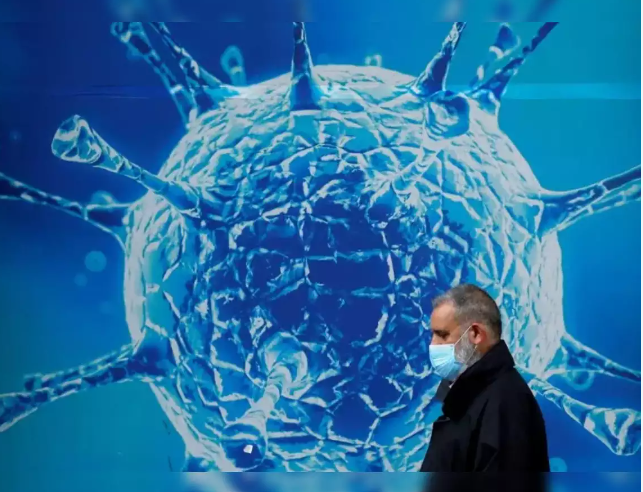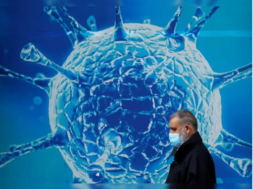
COVID-19 returns: Singapore records 56k cases in a week; 40 other countries report JN.1 subvariant
Virendra Pandit
New Delhi: With barely two weeks left for the New Year, 2024, and winter taking hold, Singapore has reported over 56,000 COVID-19 cases in the week, forcing many people to go back behind the mask, as some 40 countries, including the US, China, and India have also reported the latest subvariant, JN.1 of the coronavirus.
A case of JN.1, a subvariant of Omicron, currently spreading in the United States and China, has also been found in Kerala and Tamil Nadu, as part of the ongoing routine surveillance by the Indian SARS-CoV-2 Genomics Consortium (INSACOG), the media reported on Monday.
In a fresh surge, Singapore recorded 56,000 cases in a week, prompting the Health Ministry to issue an advisory for citizens and travelers. According to the ministry, 56,043 cases of COVID-19 cases were recorded between December 3 to 9, 2023, rising from 32,035 cases in the previous week.
India has recorded 260 new coronavirus infections, while the active cases have increased to 1,828, according to the Union Health Ministry data updated on Monday. The death toll was recorded at 5,33,317, the data updated at 8 am showed.
The country’s COVID case tally is now 4,50,05,076. The number of people who have recuperated from the disease has increased to 4,44,69,931, and the national recovery rate stands at 98.81 percent.
Altogether, 220.67 crore doses of COVID-19 vaccines have been administered in the country so far.
The Chinese mainland also detected seven mild and asymptomatic cases of contracting the subvariant JN.1 this month, with at least 40 other countries reporting the subvariant, as of December 10. In China, seven cases of JN.1 were detected on December 16. Its officials said the prospect of it becoming the dominant strain in the country cannot be ruled out.
According to a Beijing-based immunologist, more cases of the JN.1 variant are expected as the virus is borderless. The infections in China are at a low epidemic level with no unknown viruses or bacteria found while monitoring respiratory pathogens in China, a Global Times report stated.
The World Health Organization (WHO) on November 21 adjusted BA.2.86 from a variant requiring global surveillance to a variant requiring attention, evaluating the risk of clinical severe infection as low and the overall assessment of public health risk also as low.
In the United States, 17 states reported “high” or “very high” levels of respiratory illness activity as COVID-19 and other flu hospitalizations increased. In the fourth consecutive week (ending December 9), COVID-19 hospitalizations rose to 23,432, the Centers for Disease Control and Prevention (CDC) said.
In the past month, for all age groups, hospitalizations increased 200 percent for COVID-19 and 51 percent for flu in the US. The CDC alerted healthcare providers to administer COVID-19, flu, and RSV vaccines as soon as possible.
A case of JN.1, currently spreading in the United States and China, has also been found in Kerala, India, as part of the ongoing routine surveillance by the INSACOG.
A mock drill is being held at all health facilities across various states as part of a regular exercise to assess their public health and hospital preparedness measures.
Karnataka reported 58 active cases of COVID-19, Health Minister Dinesh Gundu Rao. “We are purchasing RT-PCR kits and Rapid Antigen Tests. We will keep an extra vigil on border area hospitals, nursing, and health centers so that we can pick up any early rise in cases,” he said.
“In the last three months, we have had one death due to COVID-19 but the deceased had other co-morbidities also.”
The state COVID-19 Technical Advisory Committee will meet on December 19 to discuss the impact of the JN.1 subvariant.
The World Health Organization (WHO) said the virus is evolving and changing, and urged countries to keep strict surveillance and sequence sharing.
JN.1 was first detected in August in Luxembourg, followed by England, Iceland, France, the US, and China. It is a descendant of the BA.2.86, commonly known as ‘Pirola’ – which came from Omicron. It underwent a ‘flip mutation’ and evolved into the JN.1, with an increased transmissibility.
Dr Thomas Russo, a Professor, and chief of infectious diseases at the University at Buffalo in New York, noted that JN.1 has an additional mutation on its spike protein from BA.2.86, which is what COVID uses to latch onto our cells and makes us sick. In the US, the JN.1 subvariant accounts for more than one-fifth of all infections.
Mark Cameron, Associate Professor and infectious disease researcher at the Case Western Reserve University School of Medicine, said the virus is now reaching a wider range of people, many of whom are more vulnerable to severe disease.
It is still unclear whether JN.1 causes symptoms different from other variants. “In general, symptoms of COVID-19 tend to be similar across variants,” the CDC said. The types of symptoms and how severe they are usually depend more on a person’s immunity and overall health rather than which variant causes the infection, it added.
Those infected by JN.1 would usually get a fever, a runny nose, and a headache and lose their sense of smell. However, some experience diarrhea and stomach cramps. Another tell-tale sign of JN.1 is the extreme fatigue caused, with some people complaining that they feel shattered after catching it.
In India, a 79-year-old woman became the first JN.1 case to be registered. It was detected in an RT-PCR-positive sample from Karakulam in Thiruvananthapuram district of Kerala. She had mild symptoms of Influenza Like Illness (ILI) and has since recovered from COVID, said doctors.
Kerala Health Minister Veena George said the infection was not a reason to panic. It was detected months ago in Indian passengers screened at Singapore Airport.
“There is no need to panic as, in general, all respiratory illness numbers increase during winter and so far the disease hasn’t left people gasping for breath.” Dr Anita Mathew, Director-Internal Medicine, Fortis Hospital, Mulund, said.
Dr Ishwar Gilada, Secretary-General of People’s Health Organization-India and Organized Medicine Academic Guild-OMAG, also said JN.1 has not manifested severe symptoms.














